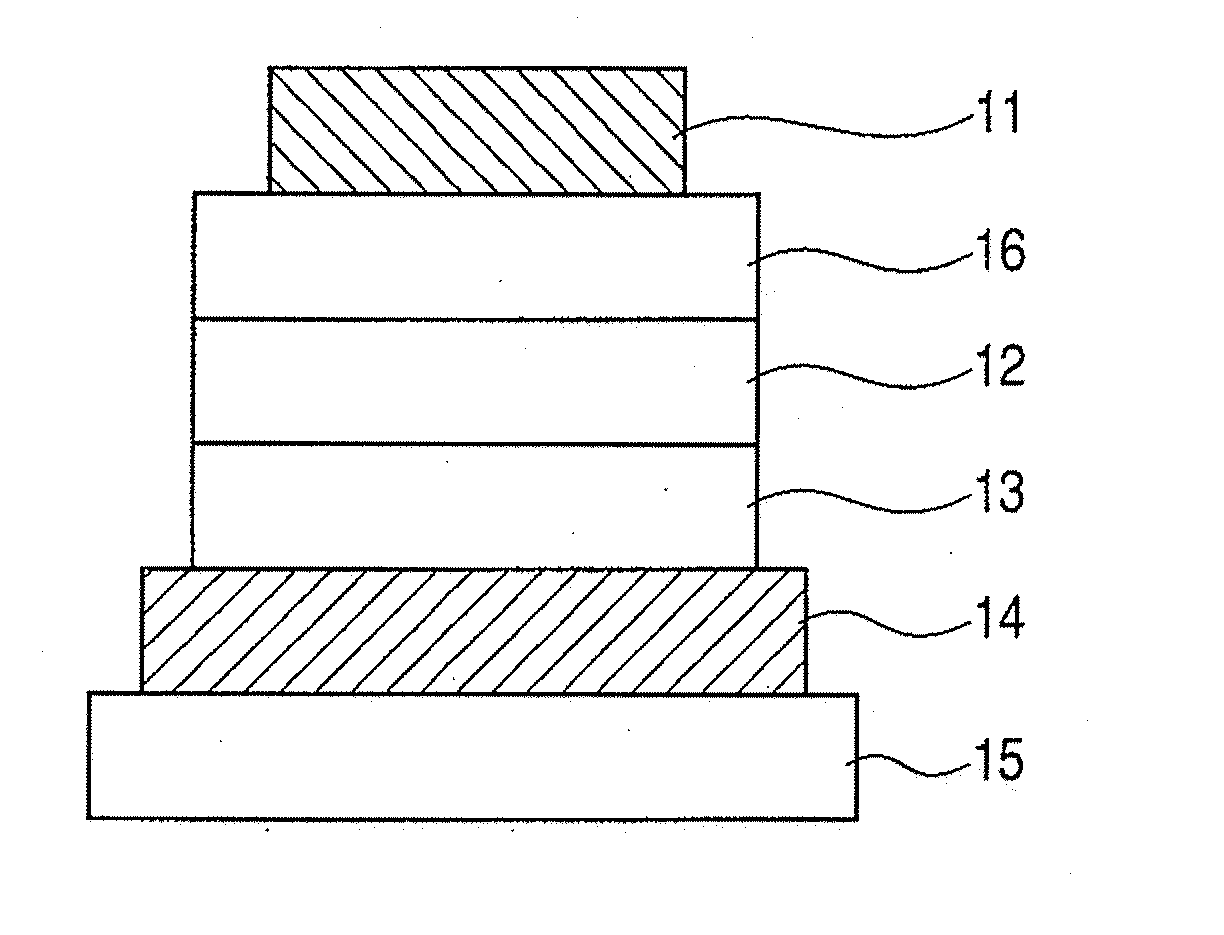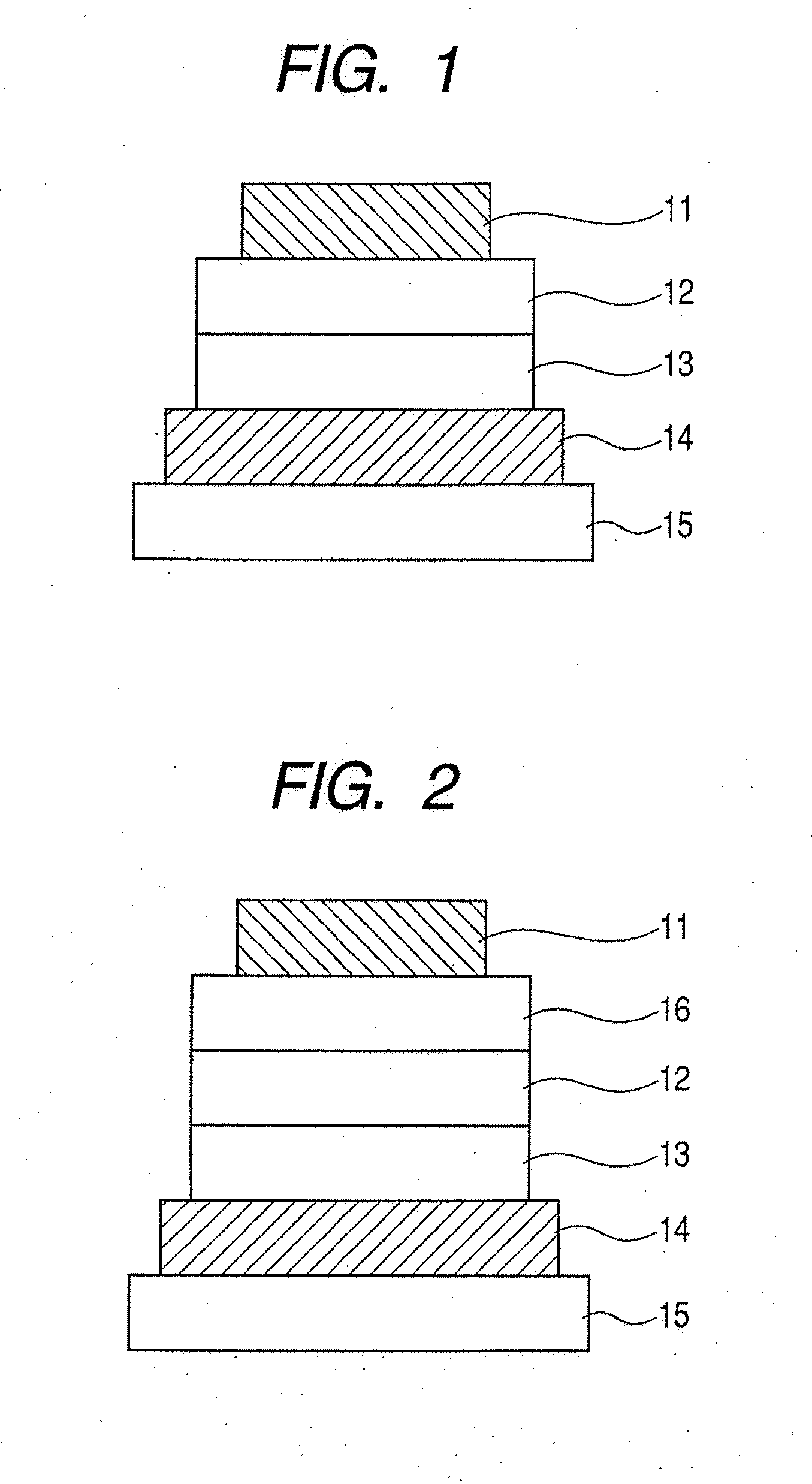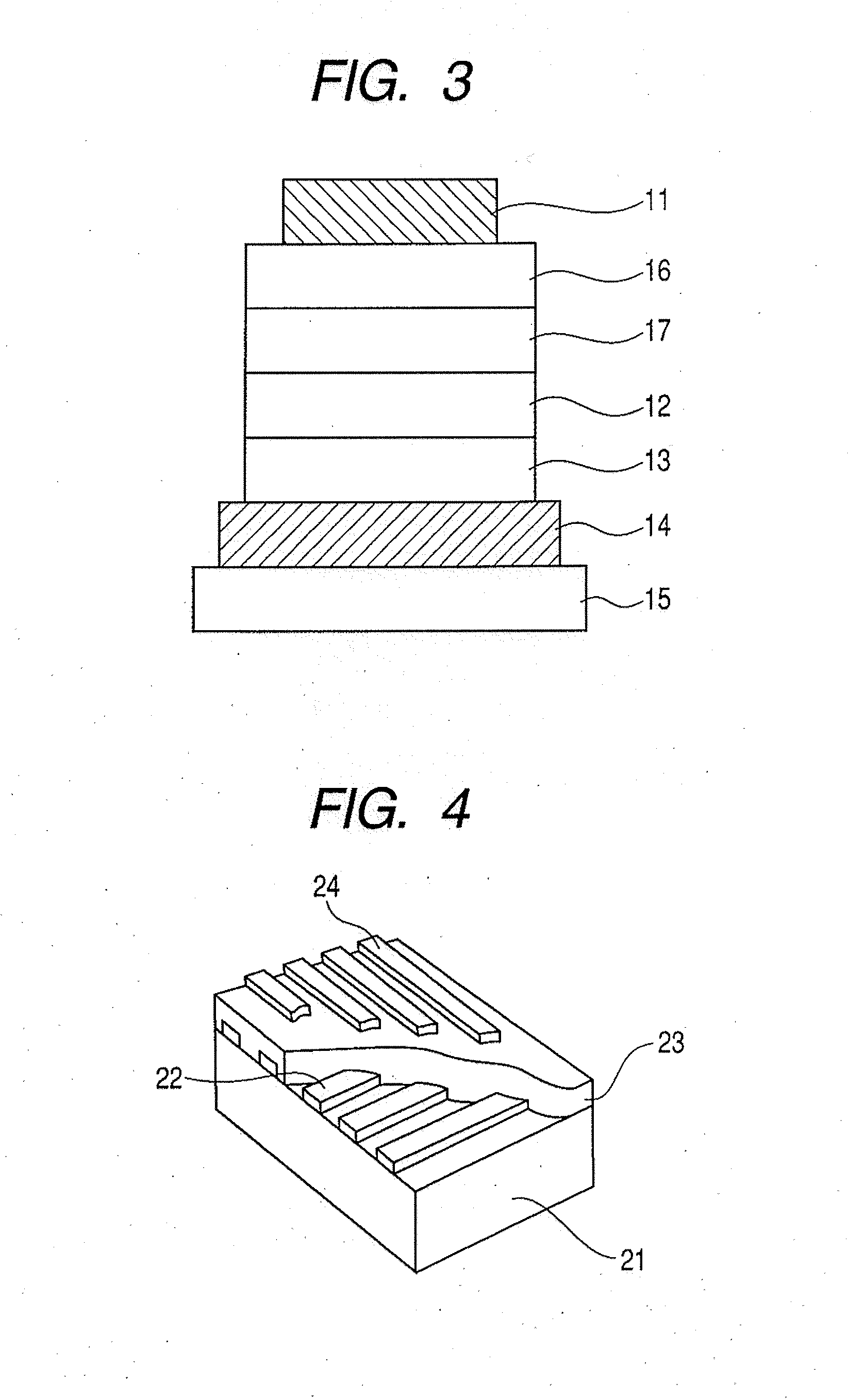Metal complex, light-emitting device, and display apparatus
a technology of light-emitting devices and complexes, which is applied in the direction of discharge tube luminescnet screens, other domestic articles, indium organic compounds, etc., can solve the problems of insufficient luminance and durability, the problem of not being satisfactorily solved, and the inability to produce compounds with sufficient luminance and durability, etc., to achieve high luminance and high efficiency
- Summary
- Abstract
- Description
- Claims
- Application Information
AI Technical Summary
Benefits of technology
Problems solved by technology
Method used
Image
Examples
example 1
[0123](Synthesis of Compound XX-1)
[0124]7.06 g (20 mmol) of iridium (III) chloride, 8.28 g (40 mmol) of Compound XL-1, and 100 ml of ethoxyethanol were fed into a 300-ml three-necked flask, and stirred at room temperature for 30 minutes in a stream of nitrogen, followed by stirring at 80° C. for 8 hours. After that, a reaction product was allowed to cool to room temperature, and a precipitate was filtrated off, and washed sequentially with water, ethanol, and acetone. The resultant product was dried under reduced pressure at room temperature to yield 5.9 g (68% yield) of Compound XX-1.
example 2
[0125](Synthesis of Exemplary Compound XC-1)
[0126]100 ml of ethoxyethanol, 5.9 g (6.79 mole) of Compound XX-1, 2.4 g (20 mmol) of acetylacetone, and 3.6 g (34 mmol) of sodium carbonate were fed into a 300-ml three-necked flask and stirred at room temperature in a stream of nitrogen, followed by stirring at 80° C. for 8 hours. After that, a reaction product was allowed to cool to room temperature, and a precipitate was filtrated off and washed with water to yield 3.9 g (40% yield) of Exemplary Compound XC-1.
[0127]1H NMR (CDCl3, 500 MHz) σ(ppm): 8.01(m, 2H), 7.73(m, 2H) 7.45(m, 4H), 7.40(m, 2H), 6.92(m, 2H), 6.81(m, 2H), 6.76(m, 2H), 5.21(s, 1H), 4.15(m, 2H), 3.86(m, 2H), 3.10(m, 2H), 2.91(m, 2H), 1.79(s, 6H).
example 3
[0128](Synthesis of Exemplary Compound XG-1)
[0129]1 g (1.42 mmol) of Exemplary Compound XC-1 and 10 g (48 mmol) of Compound XL-1 were fed into a 50-ml two-necked flask, and heated and stirred at around 160° C. for 8 hours in a stream of nitrogen. After a reaction product was allowed to cool to room temperature, methanol was added to the reaction product and a generated precipitate was filtrated off. The precipitate was subjected to purification by silica gel column chromatography using chloroform as a eluent to yield 480 mg (42% yield) of Exemplary Compound XG-1.
[0130]1H NMR (CDCl3, 500 MHz) σ(ppm): 7.96(m, 3H), 7.77(m, 3H), 7.35(m, 6H), 7.22(m, 3H), 6.85(m, 6H), 6.77(m, 3H), 3.70(m, 3H), 3.48(m, 3H), 2.68(m, 3H), 2.47(m, 3H).
PUM
| Property | Measurement | Unit |
|---|---|---|
| Structure | aaaaa | aaaaa |
Abstract
Description
Claims
Application Information
 Login to View More
Login to View More - R&D
- Intellectual Property
- Life Sciences
- Materials
- Tech Scout
- Unparalleled Data Quality
- Higher Quality Content
- 60% Fewer Hallucinations
Browse by: Latest US Patents, China's latest patents, Technical Efficacy Thesaurus, Application Domain, Technology Topic, Popular Technical Reports.
© 2025 PatSnap. All rights reserved.Legal|Privacy policy|Modern Slavery Act Transparency Statement|Sitemap|About US| Contact US: help@patsnap.com



